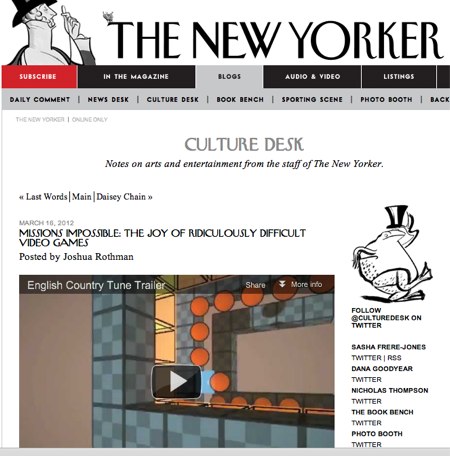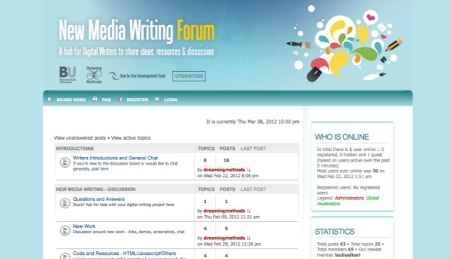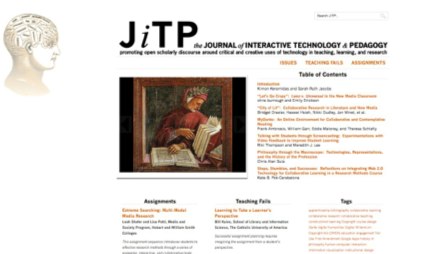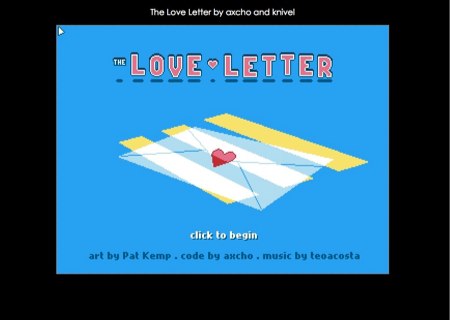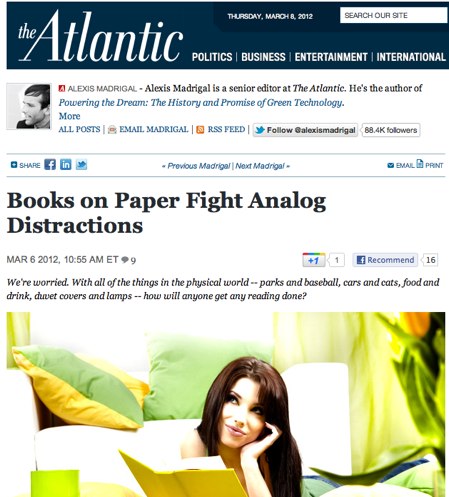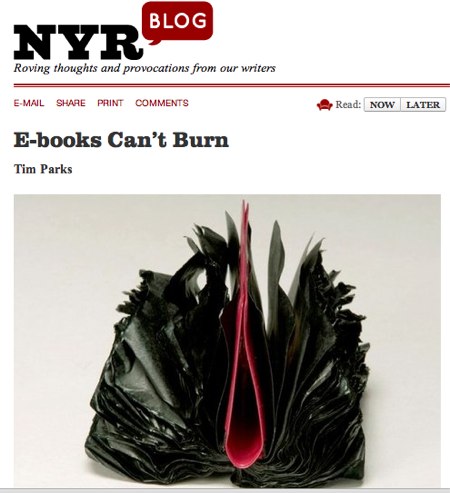Scott Rettberg recently published a history of the Electronic Literature Organization, highlighting its successes and explaining its shifts in focus.
Interestingly, he views the founding of the ELO to be a reaction to the "Eastgate school" and to Eastgate's model of publishing. Rettberg wanted a better alternative to CD-ROMS for sale; he wanted "free, web-distributed hypertext literature." In his own notes in the wake of a 1999 conference, he writes that
More hypertexts need to be free. People like free stuff. In order to generate a popular following for the new literature, we need to work to make it more accessible to readers (I haven’t read any of the Eastgate hypertexts because I’ve been in graduate school. To my knowledge, they are not available at my university library. That is a problem).
Rettberg thinks that work should be free. More broadly, he wanted to change hypertext’s economic model. Eastgate's approach was based on the economic models of print, and while this might not have been the perfect approach, it did set the precedent for authors to get paid for electronic work just as they had with print work. Mark Bernstein was surely aware of the possibility that web distribution could change the economy of publishing. He also warned of the perils of patronage, the risk of returning control of art to the prince and the priest. For electronic literature, patronage is pretty much exactly what has happened.
Rettberg paints an enthusiastic vision of community building. There was a lot of money and they had fantastic parties, but eventually the literary world lost interest and the organization turned to the patronage of academe. In the process, they lost focus on the writers.
While in its first iteration the ELO may have been envisioned as an organization focused on writers and on popularizing e-lit, it was increasingly becoming an actor in shaping an academic field of practice: moving from something more like the Academy of American Poets to something more like the MLA, or perhaps on a more appropriate scale, the Association of Internet Researchers or Society for Literature, Science, and the Arts. This is not to say that ELO was abandoning a focus on bringing electronic literature to audiences and helping e-lit writers to build a community, just that the channels for doing that were increasingly embedded with an academic context.
This transition parallels the overall state of the field: most of the writing is now done as a theoretical demonstration by the scholars who study the writing. Little of today’s eLit is meant to be read by an audience beyond conference reviewers and exhibit curators.
The shift from literary to academic was not the ELO's fault, but it's indicative of a clear shift that has taken place: we're no longer focused on writing. We're focused on theory, and much of the writing is being produced to demonstrate it. While this is not necessarily a bad thing, it is not inviting to groups outside of the academy, or successful in promoting eLit to a non-academic audience.
And why would the writers stick around? They're no longer getting paid for their work. There are certainly some very talented writers doing good work, but the proofs of concept dominate our discussions and attention.
It's easy to think of the ELO and Eastgate as two warring distribution models that can't reconcile how to provide authors with incentive to create, but surely there must be some middle ground in which the works can be easily distributed and studied, but can still provide authors incentives beyond a line on their CV. Free Web distribution has not provided us with the vast audiences some thought it would. The remaining question, as we see in eBook markets, is whether the price point is $0.99 or $9.99 or $19.95.
Mark Amerika tweets an interesting trailer for the Museum of Glitch Aesthetics. I was expecting a portfolio of interesting glitch work, but apparently the site is actually a commissioned work itself, a piece in Amerika's series of transmedia narratives that aims to tell the story of a glitch artist. From the Abandon Normal Devices page:
The Museum of Glitch Aesthetics (MOGA) is the latest work in Mark Amerika's collaborative series of transmedia narratives. MOGA tells the story of The Artist 2.0, an online persona whose personal mythology and body of digital artworks are rapidly being canonised into the annals of art history. The piece traces the life of the artist and his ongoing commitment to a practice of ‘glitch aesthetics’ that leads to the museum of the title. MOGA will feature a wide array of artworks intentionally corrupted by technological processes including net art, digital video art, digitally manipulated still images, game design, stand-up comedy, sound art, and electronic literature. The project will also include a mock museum catalog available in both free e-book and print-on-demand editions.
Glitch deals largely with remix aesthetics, but there's more going on here. Much of JODI seems to deal with anxiety over uncontrollable technology but there is the issue of textuality in code and the conspicuousness of the machine at work. Similarly, generative poetry like John Cayley's or Nick Montfort's work embraces detachment of signifier and highlights the bold line between where the human ends and the machine begins in a way that explores the complexities of human-machine interaction.
Glitches highlight the break in the cyborg mentality, relying on the push and pull of anxiety, departure from the human, and the confrontation of the uncanny. Perhaps this is why so much pleasure is gained through knowledge of the source material and understanding just how it has been changed or corrupted. Perhaps we are quantifying change in a way that will make the remixers and gamers--both fetishizers of power and agency--comfortable in the knowledge that the line between human and machine is clear and controllable.
Joshua Rothman confirms what hardcore gamers have believed for a long time: difficult games are superior.
In the world of video games, difficulty can be a virtue in itself. A game like Angry Birds is just difficult enough to be diverting—and, as a result, only fit for “casual” gamers. Real gamers are like real art lovers. They demand extraordinary difficulty.
Are we talking about cultural sophistication, or are both just a carefully sculpted image for an exclusive club that not everyone is skilled enough to be a part of? I I've written on feminism as a gaming counterculture, and perhaps the rise of the austere, difficult puzzle game is another counterculture to watch. But let's be careful not to confuse difficulty with superiority; there are many other aesthetic merits to consider, and it's easy to substitute "difficulty" for "masculinity" or "heteronormativity" or "privilege."
I've recently discovered the New Media Writing Forum, a "hub for digital writers to share ideas, resources, and discussion." The forum is still young, but the quality of the posts is remarkable (take, for example, this post by Andy Campbell) and everyone there seems to be serious about the medium.
Elit has lacked an online meeting point where writers could come to discuss work, criticism, and theory. I’ve noted a desire for more cohesion as a community, but individuals seem lost on how to find one another beyond the usual cliques.
This endeavor is a good reminder that people want to be talking to each other and are always looking for ways to bring the community together. Perhaps this forum can evolve into that shared space.
The Graduate Center at CUNY has released The Journal of Interactive Technology and Pedagogy (JiTP), which focuses on the philosophy and practice of teaching in the digital age. All materials are open access. JiTP features papers on successful assignments and new learning resources, but the most impressive section is on "teaching fails" to showcase how assignments go wrong when certain variables are not taken into account.
The Love Letter is a simple and fun 5 minute game that reminds us how important uninterrupted reading can be.
March 8, 2012
Stacey Mason
Alexis Madrigal for the Atlantic worries that with so many analog distractions – people, cats, swimming pools, coffee – we will never be able to sit down and read books. Naturally, the only reprieve from an endless bombardment of distraction comes from reading on a screen.
Can you concentrate on Flaubert when your cute cat is only a few feet away, or give your true devotion to Mr. Darcy when people are swimming in a pool nearby?
People who read books on paper are realizing that while they really want to be reading Dostoyevsky, the real world around them is pretty distracting with all of its opportunities for interacting with people, buying things in stores, and drinking coffee.
It's a brilliantly written article, one that leaves you wondering why nobody has written it before now.
March 6, 2012
Stacey Mason
Tim Parks argues for the merits of ebooks, noting that in addition to the fact that you can’t burn an ebook, they bring us closer to the essence of literature.
Literature is made up of words. They can be spoken or written. If spoken, volume and speed and accent can vary. If written, the words can appear in this or that type-face on any material, with any impagination. Joyce is as much Joyce in Baskerville as in Times New Roman. And we can read these words at any speed, interrupt our reading as frequently as we choose. Somebody who reads Ulysses in two weeks hasn’t read it any more or less than someone who reads it in three months, or three years.
Parks continues by drawing a correlation between the maturity of an audience and its appreciation for ebooks. They free us from the vanity and “fetishistic gratification” of showcasing what we’ve read on a bookshelf. They also eliminate the distraction of the material object, focusing our attention on the text itself.
In this sense the passage from paper to e-book is not unlike the moment when we passed from illustrated children’s books to the adult version of the page that is only text. This is a medium for grown-ups.
Parks has a point, but he does come off as a little condescending. Ebooks and tree-books both have benefits and drawbacks. They both offer certain comforts of permanence, one through physicality the other through ubiquitous distribution and ease of reproduction. Not to mention that the ebook still has a long way to go in terms of navigational ease, and in many cases even just quality of transcription.
And if the focus on the text is the virtuous, mature endeavor, on which aspects of the text should we focus when studying eLit, when the interface influences our interaction with the text more directly than the ebook’s?
.

